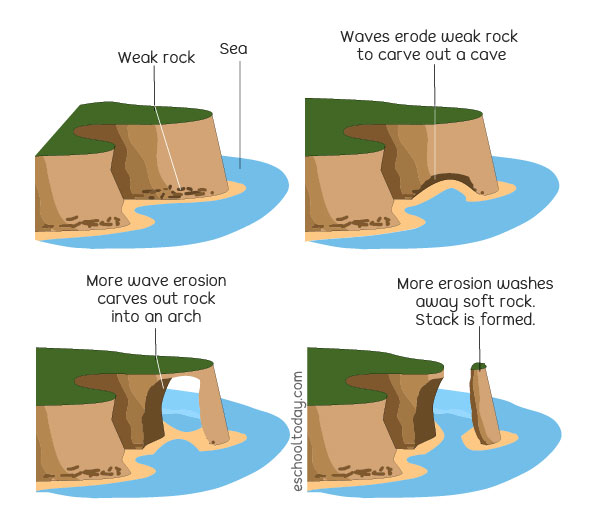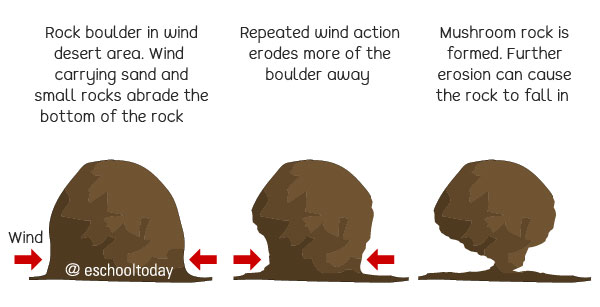- Landforms
How does erosion shape landforms
On the previous page, we mentioned that weathering precedes erosion. Erosion is the natural process of removal and transportation of weathered material from its original location and deposition into a new environment. The factors or agents of erosion include water, ice, wind, and gravity. Many spectacular waterfalls, caves, coastal platforms, and valleys have been a result of erosion.
Water erosion:
Water erosion can occur anywhere that there are water and land or rock surface. Water erosion can begin as soon as raindrops start falling. As more rain falls, the water runs over the land or rock surface, collecting weathered material with them. The power of moving water increases with more water, and its ability to carry heavy debris increases. Vegetation cover and mulch often help obstruct and reduce the impact of water erosion. Water erosion (and river erosion) is more powerful on steep slopes than on the gentle or flat ground.
Water erosion can also occur in coastal areas. Powerful waves can push water and pound its surrounding lands, often carving out interesting landforms in them.
Below is an illustration of how sea waves can carve out weak rocks into interesting geological features.

River erosions also have a key role in the formation of landforms.
Wind erosion:
Wind action such as whirlwind and more powerful ones such as hurricanes and tornados can move weathered material. During wind erosion, three things happen: First, they can lift and transport dust, sand, and loose rock particles (suspension). Secondly, sand particles can saltate, bounce, and jump and break down into even smaller particles. Thirdly, bigger sand particles can be dragged along (creeping). During erosion, the airborne particles can polish any object in its path.
Dunes are good examples of the action of wind erosion. They are very common in desert areas where there are very little rainfall and vegetation. Rock pedestal (mushroom rock) is another feature of wind erosion. Below is an illustration of how wind erosion carves rock pedestals.

Ice erosion:
A glacier is moving ice. Ice erosion happens in places where there is more snowfall than snow melts. As snow accumulates, sometimes for many years, they thicken and give way due to gravity. Glaciers can carry various sizes and weights of debris with them.
